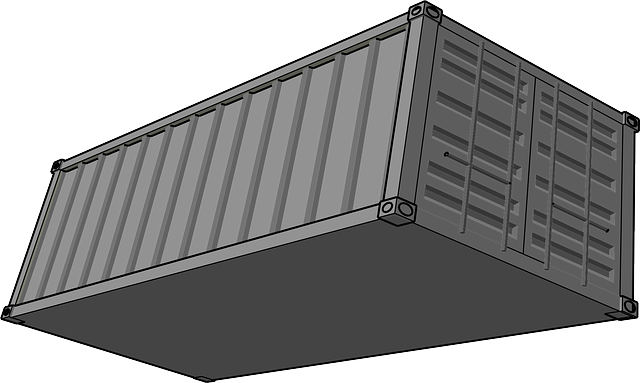Group rates offer a competitive edge in cargo protection for fleets by facilitating cost savings and enhanced risk management. By pooling resources, larger fleets can negotiate lower insurance premiums, secure exclusive discounts from service providers, and implement advanced security measures that would be individually prohibitive. This collaborative approach not only reduces operational expenses but also strengthens the security of individual businesses, ultimately contributing to a safer, more efficient logistics network and improved profitability in the freight industry.
In today’s competitive logistics landscape, unlocking savings is a game-changer. Group rates and fleet size benefits offer a strategic advantage that can significantly enhance profitability. This article delves into the power of collective action, exploring how understanding group rates and leveraging fleet size can lead to substantial cost savings. From enhancing cargo protection for fleets to successful case studies, we unravel the secrets to maximizing returns in the world of logistics.
Understanding Group Rates: How They Work and Benefits for Fleets

Group rates are a powerful tool that offers significant savings opportunities for fleets, especially when it comes to managing costs associated with cargo protection. These rates work by aggregating the buying power of multiple businesses or organisations to negotiate better terms and prices from service providers. In the context of cargo protection, fleet operators can pool their resources and collectively bargain for reduced insurance premiums, offering substantial benefits in terms of cost savings and improved risk management.
When a fleet consolidates their purchasing power, they gain access to lower rates on various services, including cargo insurance. This is because insurers often offer group discounts to attract and retain larger clients. As a result, fleets can enjoy enhanced protection for their valuable cargo while also reducing operational expenses. By leveraging group rates, businesses can create more stable and cost-effective risk mitigation strategies, ultimately contributing to improved profitability in the long run.
The Impact of Fleet Size on Savings: Unlocking Hidden Advantages

In the realm of commercial transportation, fleet size plays a pivotal role in unlocking significant savings and enhancing operational efficiency. As companies leverage their purchasing power through larger fleets, they gain access to benefits that can substantially reduce costs. One notable advantage is the potential for discounted rates on cargo protection services, which are essential for safeguarding valuable shipments during transit. By aggregating a substantial number of vehicles under a single management, fleet operators can negotiate better terms with insurance providers and third-party logistics companies, ensuring comprehensive yet cost-effective cargo protection for their entire fleet.
Moreover, larger fleets allow for the diversification of transportation methods and routes, which can further optimize savings. This flexibility enables businesses to take advantage of economies of scale, negotiating group rates for various services such as fuel, maintenance, and even vehicle leasing. As a result, companies with substantial fleets can minimize operational expenses while maintaining control over their supply chain, ultimately leading to increased profitability and competitiveness in the market, especially when coupled with effective cargo protection strategies.
Cargo Protection Strategies: Ensuring Security through Collective Action

In today’s digital era, where cargo protection for fleets is a paramount concern, collective action offers a powerful strategy to safeguard valuable goods. By joining forces and sharing resources, businesses can unlock significant advantages in securing their shipments. One of the key benefits is the ability to implement robust security measures that would be cost-prohibitive for individual companies. This collective approach enables groups to invest in advanced tracking systems, encryption technologies, and comprehensive insurance plans, significantly reducing the risk of cargo theft or damage.
Moreover, group efforts can lead to better negotiation power with shipping carriers and warehouses. Joint purchasing of security services and equipment allows for more favorable rates, enhancing the overall protection without compromising profitability. This collaborative strategy not only strengthens the security posture of individual businesses but also contributes to a safer and more efficient logistics ecosystem for the entire fleet.
Case Studies: Successful Implementations of Group Rate Savings in the Logistics Sector

In the competitive logistics sector, group rate savings have proven to be a powerful strategy for enhancing profitability. Several case studies highlight the successful implementation of this approach. For instance, consider a regional freight company that consolidated their purchasing power by forming an alliance with several smaller competitors. By pooling their cargo protection for fleets and negotiating collective discounts with carriers, they achieved significant cost reductions without compromising service quality.
This collaboration not only improved their financial health but also enabled them to pass on the savings to clients, making their services more competitive in the market. Another notable example involves a global supply chain management firm that optimized its fleet size through strategic partnerships. By coordinating vehicle sharing and route planning among members, they reduced operational costs associated with cargo protection for fleets while increasing overall efficiency, demonstrating the potential of group rate strategies in transforming logistics operations.
By leveraging group rates and understanding the power of fleet size, logistics companies can significantly enhance their operational efficiency and savings. The strategies discussed, including cargo protection through collective action, have proven to be game-changers in the industry. Implementing these practices not only unlocks financial benefits but also improves security for fleets, ensuring a robust and resilient supply chain. Embracing these innovative approaches is a sure way to stay competitive in today’s market.
